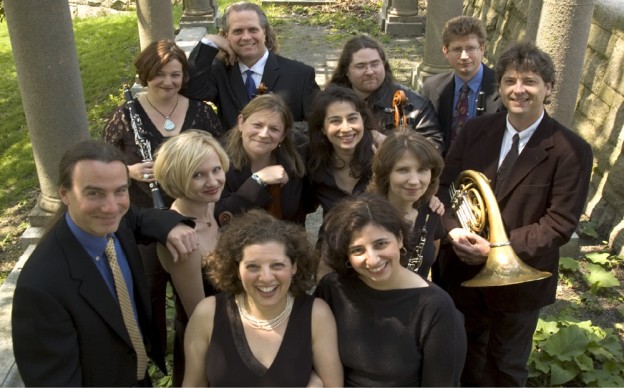Chameleon Arts Ensemble covers wide ground in season opener
Of the wide range of works performed by the Chameleon Arts Ensemble at First Church Sunday afternoon, it was John Luther Adams’ Dark Wind that lingered in the memory.
The Alaskan composer is riding high these days. His ground-breaking and beautifully apocalyptic orchestral work Become Ocean won this year’s Pulitzer Prize. And that is just one out of a number of his pieces, with their broadly naturalistic themes, that engage audiences in new ways. Listening to his orchestral-electronic Dark Waves, for example, is to experience a broad and enveloping soundscape. It invites what ethnomusicologist Judith Becker calls “deep listening.”
The mechanics of Dark Wind (2001), a work for chamber ensemble, are breathtakingly simple. It begins with low oscillating tones in the piano. Sustained pitches in the bass clarinet and steady rolls in the vibraphone and marimba add layers to the texture. The resulting sonic wave rises and falls, never ceasing in its forward momentum. It’s an effect that creates a rich spectrum of overtones, which are left to wave and hang in space. This is music at its most elemental. The musicians of the Chameleon Arts Ensemble—Gary Gorcayca (bass clarinet), William Manley (vibraphone), Aaron Trant (marimba), and Elizabeth Schumann (piano)—gave it a majestic performance.
The other contemporary piece on Sunday’s program was Karen Tanaka’s Invisible Curve (1996), a sharply conceived work inspired by Einstein’s theory of relativity where overtones curve like light around a black hole. Cellist Rafael Popper-Keizer, playing at the bridge of his instrument, poured out a stream of whistling sonorities, which were then echoed in turns by Deborah Boldin (flute), Scott Woolweaver (viola), Karen Kim (violin), and Elizabeth Schumann (piano). Shudders rippled through each instrument as the music swelled to a peak before breaking into a cascade of rippling notes. Through their sensitive playing, the musicians gave the work bold advocacy.
Sensitivity also marked Sunday afternoon’s performance of Ralph Vaughan Williams’ stunning song cycle Along the Field. Based on poems by A. E. Houseman taken from A Shropshire Lad and Last Poems, this cycle of eight songs explores ideas about love and death through the theme of nature.
Pastoral idioms and folk music were an integral part of Vaughan Williams’ style, and a few of the songs in Along the Field are cast in a same vein. Violinist Karen Kim and tenor William Ferguson found the spirited style of country dancing in the sixth and seventh songs of the set, “Good-bye” and “Fancy’s Knell” respectively.
But more than half of the songs make use of ear-tingling dissonances that have more in common with the composer’s late symphonies than the pastoral glow of his earlier works. The violin and tenor lines of “The half moon westers low,” for example, seem to wander two different tonal paths, like strangers passing in the night.
Ferguson, a singer known for his operatic roles at the Met and elsewhere, exhibited a voice of soft delicacy and diction of spring-water clarity. His singing was complemented by Kim’s violin, which, with its silvery tone, created moments of haunting beauty.
The afternoon concluded with Schubert’s Piano Quintet in A major, Op. 114, the famous “Trout” Quintet, so named because of its fourth movement, a set of variations on a piscatorial song the prolific young composer wrote in 1817. The work’s Mozartean façade notwithstanding, the musicians played with light, dexterous touch, particularly in the outer movements. They dug in with weightier tone for the music’s more aggressive and dolorous themes while colorfully phrasing the music’s still surprising shifts in key. Their heavier approach was most evident in the Scherzo, where the quintet gave a sure-footed feel to the movement’s principal melody. Managing the sudden key changes and terraced dynamics sometimes resulted in some unsteady intonation within the ensemble.
But those moments were rare. The theme and variations were a treat to listen to and were played with a stately grace. Violinist Karen Kim cleverly handled her meandering line of the second variation. But the standouts were pianist Elizabeth Schumann, who rendered the rippling scales of the theme’s accompaniment and variations with dazzling skill, and Rafael Popper-Keizer, who gave his melody in the later variations a sweet, singing tone.
The next performance of the Chameleon Arts Ensemble will feature music by Clara and Robert Schumann, Schubert, Welcher, and Woolrich 8 p.m. November 8 at First Church, Boston. chameleonarts.org
Posted in Performances
